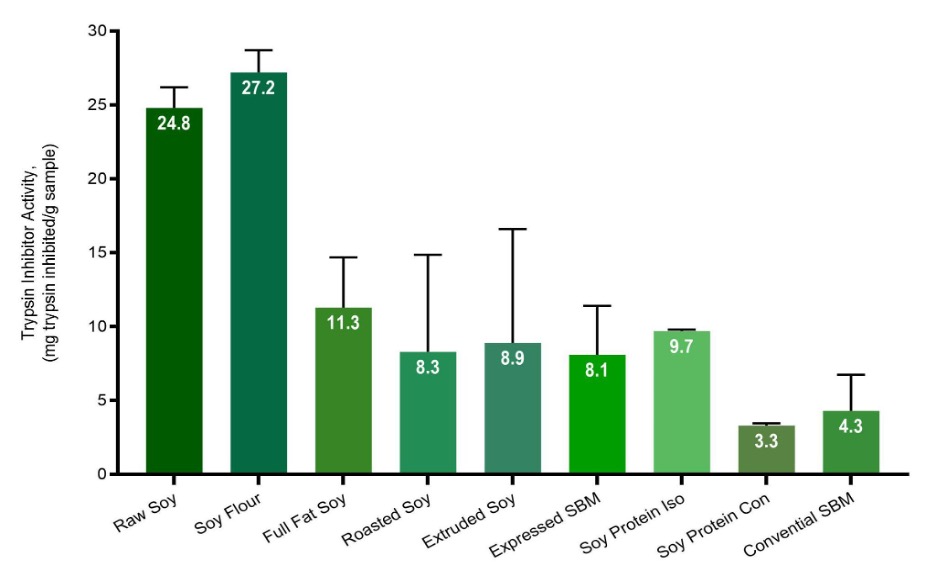
Continuous monitoring critical to uphold performance and profitability, says Rob Patterson
Understanding detection options is critical for feed producers and farmers to protect feed against trypsin inhibitor exposure – an unintended consequence of using alternative soybean ingredients that can reduce feed quality for pigs, poultry and ruminants.
“With the rise in use of alternative soybean ingredients, routine monitoring is something that anyone involved in feed manufacturing should be considering,” says Rob Patterson, VP of Innovation and Commercialization with CBS Bio Platforms. “An important first step is to understand the different detection options available, in order to choose the best fit for your specific situation and needs.”
Taking action to prevent hidden costs
CBS Bio Platforms has a strong feed science network and has kept a close eye on implications of the increasing use of alternative soybean ingredients, including the question of whether trypsin inhibitor exposure is being overlooked. Patterson has written a series of articles exploring this topic. In Part I of this series he provided a brief overview of this issue and why these anti-nutritional factors should be managed. Now in Part II of this series he discusses the importance of understanding detection and provides an overview of different options.
“Taking action is important to ensure the quality of your feed and manage your risk,” says Patterson. “Otherwise you are taking chances with performance and profitability. The good news is there are good options available to allow for continuous monitoring, which is the backbone of any successful risk management program for trypsin inhibitors.”
Laboratory analysis options
Having samples analyzed in a laboratory is one of the main options, involving two basic methods, he says. The first and most commonly used is the ‘Urease Method,’ which doesn’t detect TI directly but rather detects residual urease which is a marker for TI levels. “The premise of this method is that urease is equally susceptible to heat and processing denaturation as TI,” explains Patterson. “Therefore any urease that survives processing will be equivalent to the residual content of TI.”
The second laboratory method is known as the ‘Direct Method’. “This method differs from the urease method in that residual TI in the sample of interest are extracted and measured through a colorimetric inhibition assay in order to give a direct quantification of the TI present in the sample.”

This chart shows the TI activity of various soy products using the direct method.
Each of the two laboratory methods has distinct advantages and disadvantages, he notes. The urease method is less expensive and more practical – it can be run at a commercial lab as well on site at processing facilities that possess basic quality control laboratories. However, as the urease method is a proxy assay, it is susceptible to external interference.
The direct method, while less susceptible to this interference, requires the use of more sophisticated instrumentation and is more expensive. It involves purchasing, storing and managing expensive reagents, and typically is run by experienced and proficient technicians. “These requirements drive up both the implementation and per sample costs of this method and as such is not readily made available at most commercial laboratories.”
Rapid detection kits
An alternative to relying on third party labs for TI analysis is the use of rapid detection kits. “There are a number of options available at the moment and for the most part, each kit relies on the fundamentals of the urease method to detect TI.”
With rapid detection kits, samples can be analyzed nearly anywhere with results obtained in hours versus days at substantially less cost, he notes. “However, rapid detection kits don’t have the same precision nor are they able to detect TI at low levels to the same degree as lab based methods.”
Implementing a balanced approach
There is also a degree of subjectivity that accompanies the use of rapid kits as they rely on the user to assess color change or color formation. Because of this, Patterson recommends that rapid test kits should be considered a tool or a component of a broader monitoring program that also includes either of the two lab based TI analysis methods.







